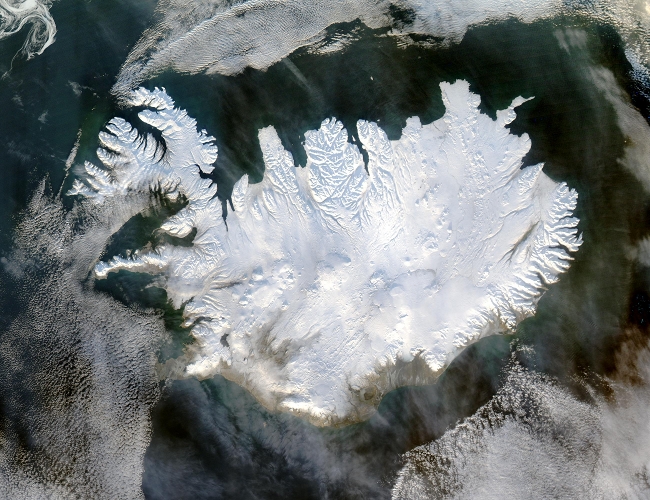
Iceland covered with snow. Credit: NASA
Iceland is an exotic island. It is exotic in at least two ways; its remote geographical placement and it being situated right on top of a tectonic hot spot on the North Atlantic ridge. You can stand with one foot on the North American and the other on the Eurasian plate at Thingvellir, the cradle of western democracy.
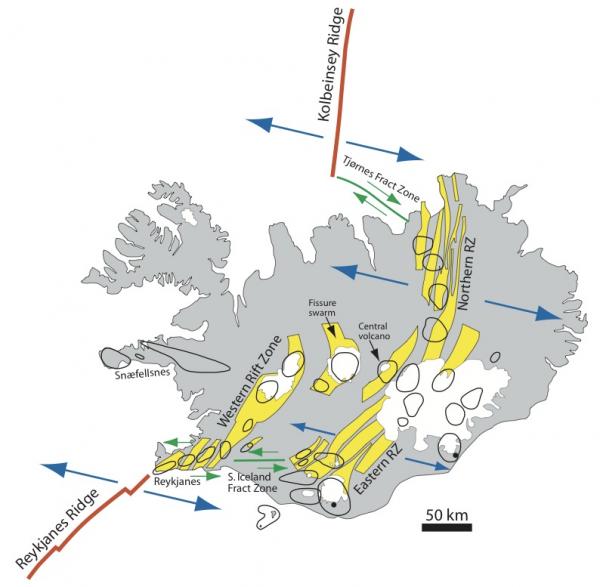
I love Iceland. While it's natural beauty is indisputable it is also a place close to my heart because of the tight historic and cultural links to my home country Norway. As citizens of a Nordic country, we are used to have little or no influence on the big events in the world. The Icelandic most certainly know what I am talking about, Iceland being populated by a little more than 300 000. And we are a merely 25 million living in the Nordic countries all together. With the 2010 Eyjafjallajökull eruption that all changed.
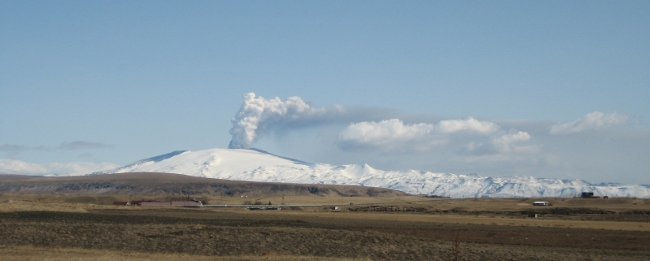
The volcanic eruption at Eyjafjallajökull closed down air traffic in most European countries for days, Norway was the first to shut down the entire country as the cloud hit land. Coming back to my point of our modest importance in the global picture, note that it wasn't until the ash cloud reached the UK the event became international news. Closing down a whole country was not enough to catch the interest of journalists outside national boarders.
The ash cloud from Eyjafjallajökull in the south of Iceland influenced most Europeans lives, including the Norwegian Prime Minister who was stuck in New York and Norway's Crown Prince who had to stay in London or my young son who reported a bad smell in Oslo. It also influenced big events such as the funeral for Poland's political elite who died in a tragic plane crash. Several heads of state, other honorables and ordinary people wanting to show their respect and grieve with the Polish people were stopped by the volcanic ash from Iceland. Eyjafjallajökull influenced events in other regions of the world as well.
In April 2010 we clearly see the economic dip that aviation industry suffered. Credit: EurocontrolThe immediate economic impact hit the aviation industry first. The International Air Transport Association (IATA) estimated that the Icelandic volcano crisis cost airlines more than $1.7 billion in lost revenue six days after the initial eruption. For a three-day period (17-19 April), when disruptions were greatest, lost revenues reached $400 million per day. As many as 1.2 million passenger a day, accounting for 29% of global aviation, were affected. Later analysis conclude that some 107.000 flight were canceled during a 8 day period representing 48% of the total air traffic. Certain days as much as 80% of total flights were canceled. Around 10 million passengers were affected by the Eyjafjallajökull ash cloud.
Civil Aviation Authorities, National Air Traffic Authorities and Volcanic Ash Warnings
It seemed that society was accepting the first couple of days of shut downs. When it turned out to last longer questions were being asked. Was it really necessary to restrict all air traffic in Europe? Who makes the decisions and what do they base their decisions on? These are questions about risk management.
“Airspace was being closed based on theoretical models not on facts. Test flights by our members showed that the models were wrong. Our top priority is safety. Without compromising on safety, Europe needed to find a way to make decisions based on facts and risk assessment, not theories,” said Giovanni Bisignani, IATA’s Director General and CEO.
When presented as merely a theoretical model it doesn't sound like the best basis for making decisions. However, models are an integral part of well known meteorological forecasting systems. Authorities have for many years used atmospheric models as basis for their decision making – with known estimates of probabilities and uncertainties. To update the models data are assimilated continuously resulting in what we know as weather forecast. Meteorological knowledge is important when trying to understand how a volcanic ash cloud is dispersed and since aviators use weather forecasts and information as basis for their daily operations encountering storms, lightening and other effects of the atmosphere, it is logical that aviators and meteorologist cooperate when dealing with volcanoes.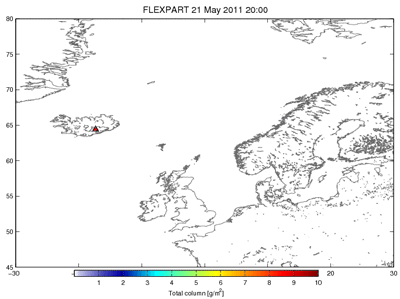
One year after Eyjafjallajökull erupted another Icelandic volcano, the Grímsvötn underneath Iceland's biggest glacier Vatnajökull, clouded parts of Europe. Above is an example of a dispersion model, FLEXPART developed by NILU, showing the distribution of the current ash cloud.
After some incidents with plane motors stopping because of volcanic ash, the World Meteorological Organization (WMO), the International Civil Aviation Organization (ICAO) and the International Union of Geodesy and Geophysics (IUGG) jointly established the International Airways Volcano Watch. It consist of 9 Volcanic Ash Advisory Centers (VAAC) providing global coverage of ash warnings through Volcanic Ash Significant Meteorological Information (VA SIGMET) that is issued from Meteorological Watch Offices (MWO) to National Civil Aviation Authorities. This information is sent to national air traffic controllers and finally reach the end users – the pilots and dispatchers who are responsible for passengers safety.
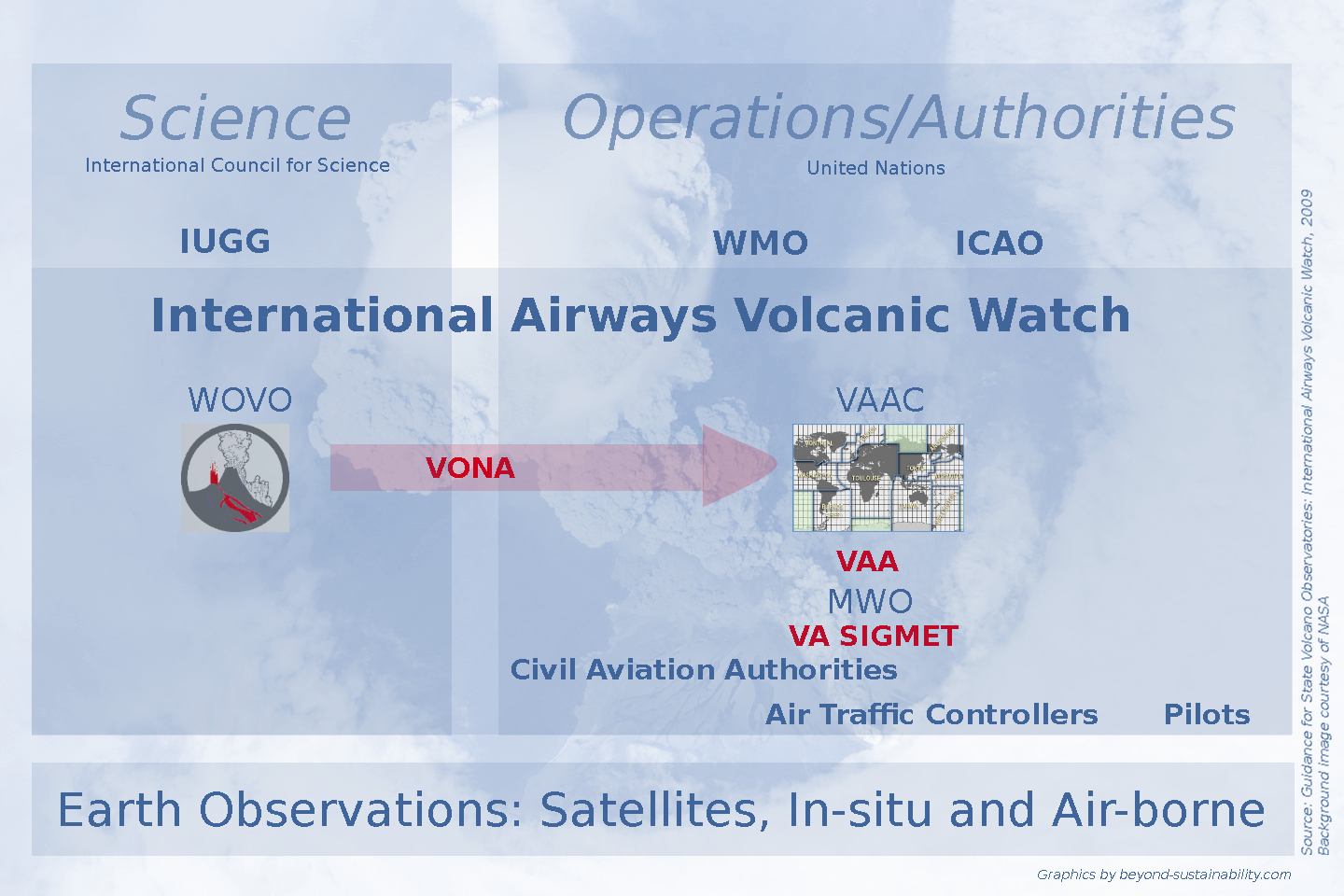
The information flow and responsibilities are both complex and difficult to grasp without visual aid. I've made a simplified graphics of the organization of this activity emphasizing the transfer of scientific knowledge and information to the operational units and authorities. Both reliability and liability are central for operations and authorities. For this reason legal agreements are signed by international organizations and states. The demands from aviation industry and passengers in the wake of the 2010 ash cloud underlines and illustrates the necessity of such arrangements.
Returning to the models, it appears that several models are being used and VAACs have a bit of a challenge coordinating warnings in multi-regional events such as the Eyjafjallajökull eruption. The 2010 volcanic eruption on Iceland involved two central VAACs: VAAC London hosted by UK's MetOffice and VAAC Toulouse hosted by France's MeteoFrance. Adjacent VAACs in this case were VAAC Montreal and VAAC Washington.
The operational activities are mainly unknown to the scientific communities who work very differently. Nevertheless, as can be seen from the graphic illustration, a formal organization providing well defined products, Volcanic Notice to Aviation (VONA), for the VAACs has been set up, integrating scientific data and information into the warning system. The final information products reaching the end users are so-called VA SIGMETs. (Volcanic Ash Significant Meteorological Information).
Information from VONA's is fed into ash cloud spreading or atmospheric dispersion models. There is a good handful of different models in use (VAFTAD, CANERM, MOCAGE, PERLE, HYSPLIT, NAME, PUFF and others ), depending on the region and operator. VAAC London use the model called NAME. Validating, calibrating and improving these models are also scientific work. Essential in these processes is empirical data. Earth observation data representing the facts/truth rather than theory. Developing and running earth observation infrastructures also requires a substantial amount of scientific and technological knowledge and knowledge production.
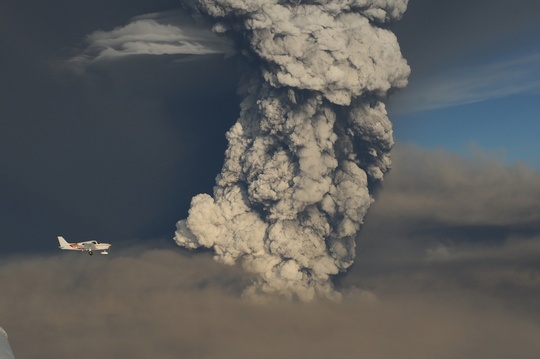
Close observations of volcanic eruptions are important for good risk assessments. Here is an airplane checking out the ash cloud of Grímsvötn eruption May 2011. Photo courtesy of Iceland Meteorological Office.
One difference between weather forecasts and volcanic ash forecasts is that thanks to a global operative observation network, rapid validation of the weather models is possible. As of yet such an extensive operational system does not exist for volcanic ash. And I believe this is what the aviators can be complaining about. Could the earth observations systems that are currently available be better integrated in the International Airways Volcano Watch? And do we have information about all the relevant parameters connected to ash clouds?
Air Traffic Management and Research
The EU Single European Sky launched in 2004 by the European Commission has the ambition to reform the architecture of European air traffic management. It proposes a legislative approach to meet future capacity and safety needs at a European rather than a local level. As such it is the equivalent to the US NextGen. The Single European Sky initiative includes SESAR (Single European Sky ATM Research) where one of the activities Long Term and Innovative Research, aims at building networks that will last beyond the Single European Sky timeframe (nominally 2020) as well as funding research during the program.
In June 2010 Europe and US agreed to cooperate on SESAR and NextGen. "Co-ordinating the two will constitute a major step towards the global standardisation of ATM systems, which the USA and the European Union will pursue through the International Civil Aviation Organisation." Flightglobal reports and continues to say that "Specific agreements on volcanic ash cloud response and alternative fuels are expected to follow the ATM announcement." (authors boldification)
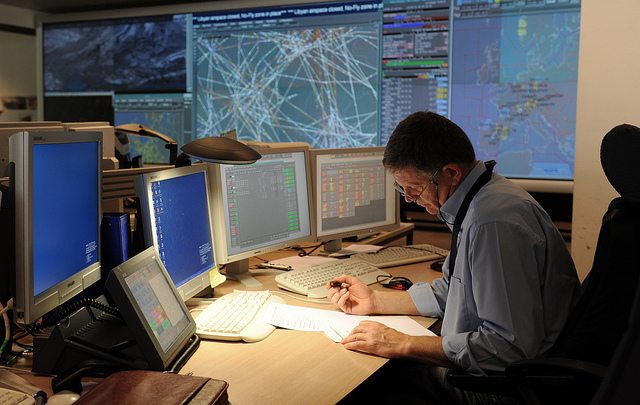
Air traffic management includes a variety of information, regulations and decision making. Credit: EUROCONTROL.
Since Eyjafjallajökull, science has moved forward. For scientists the 2010 volcanic eruption represented an unique opportunity to validate models and test instruments and surely the warning systems/risk assessments have been improved since then. Both the American Geophysical Union (AGU) and the European Geosciences Union (EGU) have had special sessions addressing the Eyjafjallajökull eruption, as they do with all major geohazards events.
Support to Aviation for Volcanic Ash Avoidance (SAVAA) is a European Space Agency (ESA) project led by Institute for Air Research (NILU). It was launched in 2007 and have since, among others, resulted in an improved ash dispersion model called FLEXPART (see animation earlier in this article). SAVAA is part of ESA's efforts to contribute to industrial development and societal applications.
Geohazards Community of Practice
Even though there are interactions between the different elements of volcanic ash warning system; from science to operations, real-time activities and long term development and innovations and so on, there is a huge need and potential of improving the transfer from scientific knowledge to implementation. The Group of Earth Observations (GEO) has established a set of so-called communities of practice in order to facilitate these interactions. The Geohazards Community of Practice is very active and addresses volcanic eruptions and their implications for aviation.
So far it looks like the Grímsvötn eruption is not going to abrupt too much of our societal activities. I know an important yearly climate meeting with ministers of state had to be canceled due to the volcanic ash coming towards Svalbard, Norway, but other than a relatively few flight cancellations further down in Europe, we seem to be spared of a repeat of Eyjafjallajökull this time. Hopefully, when the next eruption comes along we are even better prepared to manage the risks.
References:
Mostly included in the text as clickable links.
More on the 2011 Grímsvötn eruption on Science 2.0 check out Patrick Lockerby's Grímsvötn Ash Plume.


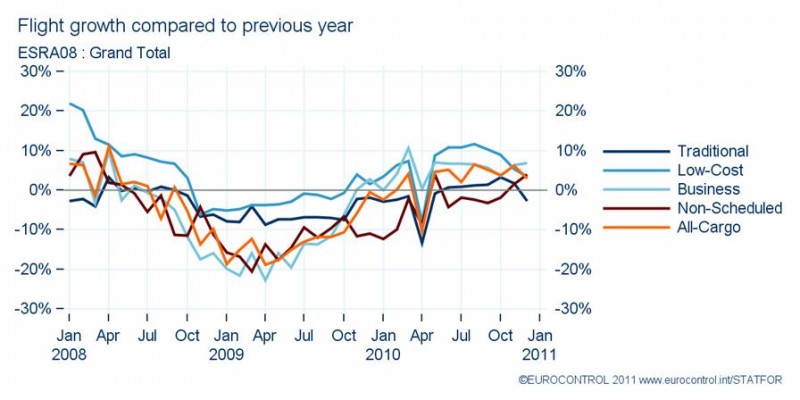


Comments